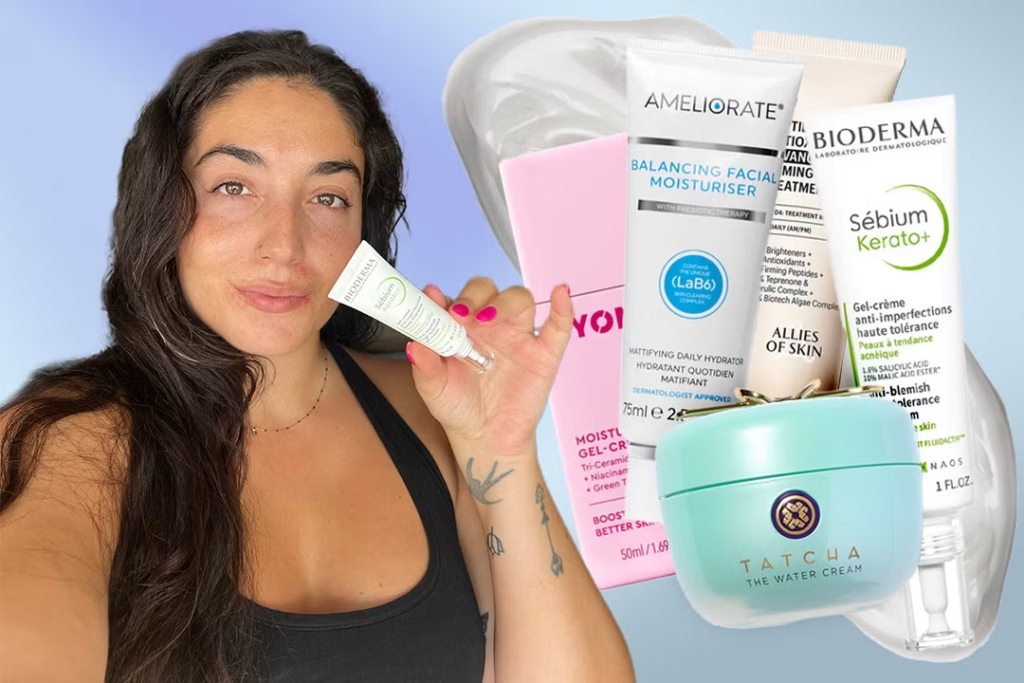Acne-prone skin requires a careful balance—products need to be effective yet gentle, hydrating but not greasy. One of the most important terms to look for on any skincare label when managing acne is non-comedogenic. This means the product is formulated to not clog pores, making it safer for skin that’s prone to breakouts, blackheads, or oil congestion.
In this guide, we’ll break down what non-comedogenic really means, why it matters, which ingredients to avoid, and which non-comedogenic skincare products are most effective for reducing acne without causing further irritation or blockage.
What Does “Non-Comedogenic” Actually Mean?
“Comedogenic” refers to ingredients or substances that can clog pores and lead to the formation of comedones—commonly known as blackheads and whiteheads. Non-comedogenic products are designed to minimize this risk, making them better suited for oily, sensitive, or acne-prone skin.
However, it’s important to understand that the term is not strictly regulated, so checking the ingredient list and understanding your skin type is just as crucial as trusting the label.
Why Non-Comedogenic Products Are Essential for Acne-Prone Skin
| Benefit | Why It Matters for Acne-Prone Skin |
|---|---|
| Prevents Pore Clogging | Reduces formation of blackheads and whiteheads |
| Reduces Inflammation | Gentle formulas help avoid further irritation |
| Supports Acne Treatments | Complements active ingredients without interference |
| Improves Skin Texture | Fewer breakouts lead to smoother skin over time |
| Balances Oil Production | Keeps skin hydrated without heaviness |
Key Skincare Categories and What to Choose
1. Cleansers
Your face wash sets the tone for your entire routine. Look for a gentle, sulfate-free cleanser that removes excess oil without stripping your skin.
Ideal Ingredients:
- Salicylic acid
- Niacinamide
- Green tea extract
Avoid:
- Harsh surfactants
- Fragrance
- Heavy oils like coconut oil
2. Toners
Toners help balance the skin’s pH and remove any residue left behind after cleansing.
Best Non-Comedogenic Toners:
- Alcohol-free witch hazel
- Niacinamide-based formulas
- Rose water or cucumber extracts
3. Serums
Serums allow for targeted treatment without heavy residue. Choose lightweight serums with acne-fighting ingredients.
Look for:
- Niacinamide
- Azelaic acid
- Salicylic acid
- Zinc
4. Moisturizers
Contrary to popular belief, even oily and acne-prone skin needs moisture. The key is choosing a Lightweight Moisturizer for Oily Acne-Prone Skin that hydrates without contributing to breakouts.
Recommended Ingredients:
- Hyaluronic acid
- Glycerin
- Ceramides
- Squalane (plant-derived)
5. Sunscreens
Sunscreen is essential, especially if you’re using acne treatments like retinoids or AHAs. Choose a broad-spectrum, oil-free, non-comedogenic formula.
Preferable Types:
- Gel-based
- Water-based
- Zinc oxide or titanium dioxide (for sensitive skin)
Common Comedogenic Ingredients to Avoid
Not all oils or emollients are acne-friendly. Some commonly used ingredients can block pores and worsen breakouts.
| Potentially Comedogenic Ingredient | Alternative to Use Instead |
|---|---|
| Coconut oil | Squalane or jojoba oil |
| Isopropyl myristate | Hyaluronic acid |
| Lanolin | Glycerin |
| Algae extract | Aloe vera |
| Mineral oil | Lightweight silicone (e.g., dimethicone) |
Always perform a patch test when trying new products—even if they are labeled “non-comedogenic.”
Non-Comedogenic Routine for Acne-Prone Skin
Here’s a simple daily routine using non-comedogenic products:
| Time | Step | Purpose |
|---|---|---|
| Morning | Cleanser | Remove oil and prep skin |
| Toner | Balance and calm | |
| Serum | Target acne or redness | |
| Moisturizer | Hydrate without clogging pores | |
| Sunscreen | Protect from UV damage | |
| Evening | Cleanser | Remove dirt, oil, and makeup |
| Toner | Rebalance after cleansing | |
| Treatment Serum | Include actives like retinol or BHA | |
| Moisturizer | Lock in hydration overnight |
FAQs About Non-Comedogenic Skincare
Q1: Can non-comedogenic products completely prevent acne?
Not always. While they help reduce the risk of clogged pores, other factors like hormones, stress, and diet also influence breakouts. Still, using non-comedogenic products is an important step in preventing flare-ups.
Q2: Are natural or organic products automatically non-comedogenic?
No. Natural oils like coconut or cocoa butter can be highly comedogenic. Always check the comedogenic rating of ingredients before assuming they’re safe.
Q3: Do I still need to moisturize if I have oily skin?
Yes. Skipping moisturizer can lead to dehydration, which in turn may cause your skin to produce even more oil. Use a Lightweight Moisturizer for Oily Acne-Prone Skin to balance hydration and sebum production.
Q4: How can I tell if a product is causing breakouts?
Introduce new products one at a time and observe your skin for 1–2 weeks. If you notice consistent breakouts, it may be due to pore-clogging ingredients or sensitivity to actives.
Q5: Are all non-comedogenic products fragrance-free?
Not necessarily. While fragrance can irritate sensitive skin, it isn’t directly related to comedogenicity. However, fragrance-free products are often better tolerated by acne-prone individuals.
Final Thoughts
Navigating skincare when you have acne can be overwhelming, but choosing non-comedogenic products simplifies the process. By avoiding pore-clogging ingredients and sticking with gentle, oil-free formulations, you give your skin the best chance to heal and stay clear.
Whether you’re building a new routine or just replacing a few products, pay close attention to labels and ingredient lists. A consistent, non-comedogenic regimen—paired with the right treatments—can make all the difference for your skin’s clarity, texture, and health.
Remember, clear skin doesn’t happen overnight. Be patient, stay consistent, and your skin will thank you.







